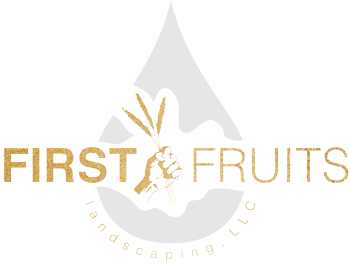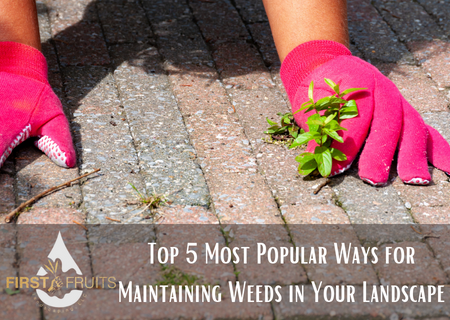A well-maintained landscape is the pride of any homeowner or gardener. However, amidst the lush greenery and beautiful flowers, the persistent growth of weeds can be a constant battle. Weeds not only spoil the aesthetic appeal of your landscape but also compete with desirable plants for resources. To maintain a weed-free garden, one must employ effective strategies that strike a balance between chemical-free solutions and efficient weed control. In this blog, we will explore the top five most popular ways to maintain weeds in your landscape, allowing you to enjoy a thriving and beautiful garden.
Top 5 Most Popular Ways for Maintaining Weeds in Your Landscape
#1-Mulching
Mulching is a tried-and-true method for weed control that has been used for centuries. By covering the soil with organic or inorganic material, you create a physical barrier that impedes weed growth. Organic mulches, such as wood chips, straw, or shredded leaves, not only suppress weeds but also enrich the soil as they decompose. Inorganic mulches, like gravel or plastic sheets, are durable and more effective in preventing weeds from germinating.
Mulching provides various benefits, such as retaining moisture, moderating soil temperature, and reducing soil erosion. To make the most of mulching, apply a layer of 2-4 inches of mulch around your plants. Be cautious not to smother the plant’s base, as this can lead to moisture-related issues.
#2-Hand Pulling and Hoeing
For small-scale weed control, hand pulling and hoeing remain effective and eco-friendly methods. Although they require physical effort, they allow for the precise removal of weeds, including their roots, preventing them from regenerating. Hand pulling is best for weeds with shallow root systems, while hoeing works well for weeds in larger areas or rows. To ensure success, pull or hoe weeds when the soil is moist, making the task easier and minimizing soil disruption.
Remember to wear gloves when hand pulling to protect your hands from thorns and prickles. It is essential to remove weeds before they set seed to prevent future weed proliferation.
#3-Herbicides
When manual methods are not sufficient, herbicides can be employed as an effective chemical solution to combat weeds. Herbicides are formulated to target specific weeds while leaving desirable plants unharmed when used correctly. They are available in various forms, including selective and non-selective herbicides.
Selective herbicides are designed to control specific types of weeds, making them ideal for gardens with established plantings. Non-selective herbicides, on the other hand, will kill any vegetation they come into contact with and are best suited for controlling weeds in empty areas or along hardscapes. When using herbicides, always read and follow the label instructions, apply them on a calm day to prevent drift, and avoid using them near water sources to protect aquatic life.
#4-Landscape Fabric
Landscape fabric, also known as weed barrier fabric, is a synthetic material designed to suppress weed growth while allowing air and water to penetrate the soil. It is an excellent option for areas with ornamental plants or shrubs, as it provides a long-lasting solution to weed control.
To use landscape fabric effectively, first, clear the area of existing weeds. Lay the fabric on the soil surface and cut holes for plants to grow through. Cover the fabric with a layer of mulch to enhance its appearance and improve its longevity. Keep in mind that landscape fabric may not be suitable for vegetable gardens, as it can hinder natural soil amendments and earthworm activity.
#5-Solarization
Solarization is a natural and chemical-free technique for eradicating weeds and harmful organisms from the soil. It involves covering the infested soil with a clear plastic sheet to trap solar heat, raising temperatures to levels lethal for weeds and pests. Solarization is most effective during the hottest months of the year, as the process relies on intense sunlight.
To solarize a garden bed, water the area thoroughly and cover it with a plastic sheet, securing the edges to the ground. Leave the plastic in place for about 4 to 6 weeks. While effective, solarization may also kill beneficial organisms in the soil, so it’s best suited for specific situations or areas with severe weed problems.
In Conclusion
Maintaining weeds in your landscape requires a combination of effective strategies and a proactive approach. By employing these top five popular methods, including mulching, hand pulling, herbicides, landscape fabric, and solarization, you can create a weed-free and thriving garden that will be the envy of the neighborhood. Remember to choose methods that suit your garden’s specific needs and always prioritize sustainable and eco-friendly solutions for a healthy and beautiful landscape. Happy gardening!
For more information on all of your landscaping needs, contact us!

